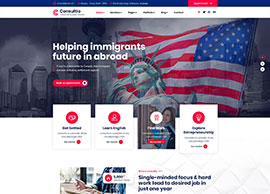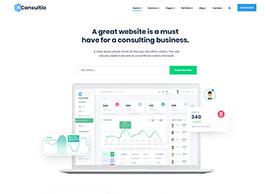 Amazon recently announced that they are going to start offering franchises for their final mile package delivery segment. For as little as a $10,000 investment (Which could be free if you are a veteran), you could start an Amazon package delivery franchise. We believe that within 5 years, this will dramatically change the package delivery networks as we know it, to the detriment of the USPS® and the other major small parcel carriers. The competitive advantage they could create could be similar to what McDonald’s built with their franchise model in the 1950s and is still the dominant restaurant chain in the world.
Amazon recently announced that they are going to start offering franchises for their final mile package delivery segment. For as little as a $10,000 investment (Which could be free if you are a veteran), you could start an Amazon package delivery franchise. We believe that within 5 years, this will dramatically change the package delivery networks as we know it, to the detriment of the USPS® and the other major small parcel carriers. The competitive advantage they could create could be similar to what McDonald’s built with their franchise model in the 1950s and is still the dominant restaurant chain in the world.
According to One Click Retail, an e-commerce analytics provider, Amazon accounted for 44% of all e-commerce sales in 2017. To reduce delivery costs and have more control of their growth, they have started offering package delivery franchises in the same way McDonald’s did in the 1950s. With no experience required, you can own a franchise that can have as many as 40 vans and 100 employees. Amazon will lease you the trucks, the software and will train you on what is needed to run a successful business.
From the entrepreneur side, we see this being incredibly popular as people see the growth in the package delivery space. This will be looked at as a new frontier where people will want to get in early. We do not see Amazon having any issue attracting people who are willing to work hard to build up their franchise. Also, with the minimal startup costs and a guaranteed revenue source from a parent company that people expect to have continued growth, the risk will be perceived as low.
From Amazon’s perspective, this is a total game changer. They will be able to win in the final mile package delivery segment. They already have 7,000 trucks and 40 airplanes that can move their packages to hub locations. It has always been the final delivery segment or “Last Mile” that has been the trouble. They have needed to rely on USPS, UPS® and FedEx® for the majority of their deliveries. If they can find a way to do these deliveries at lower costs with better delivery times, it offers them a competitive advantage that can skyrocket Amazon’s growth.
Here are the major ways that this will provide them with this competitive advantage:
- The major carriers are under unions that have significant negotiating power. These small business owners will be able to pay significantly lower wages and benefits.
- The major carriers have 4-7% annual increases, where Amazon will be able to control the rates paid.
- By Amazon having this network, it gives them the ability to tailor the delivery experience to the needs of the client and further expand its Prime service. As we can get packages delivered in 2 hours, at night or on weekends, it will increase the amount of people buying from Amazon, furthering their growth. Other companies will have a difficult time competing with these rates and service levels.
- The major carriers have incredible amounts of infrastructure and overhead. These small businesses will have minimal and can keep costs low.
- The major carriers must cover the costs for their long-haul deliveries where these businesses are only concerned with the last mile.
- These franchises can be set up in densely populated areas, which are the most profitable routes, and leave the rural, remote deliveries to the private carriers and the USPS which have lower volumes and margins.
In our view, this has short and long-term implications for the USPS and the private carriers. As Amazon’s franchise shipping increases, they will reduce the number of shipments that leave their network, which could reduce the profitability of the other providers. This is especially true for the USPS that is estimated to have delivered 40-60% of Amazon’s US packages. If they can now rely on their own network, it could cause a decline in the one growth segment the USPS depends on for its future sustainability.
Eventually, Amazon may be able to market this delivery network to clients outside of orders placed on their website. They could market themselves as a carrier just like the others where items could be drop shipped to their hubs and their delivery network could move items to their final destination. They could have a competitive advantage based on their lower costs and flexible delivery times discussed above. Regardless, having another major carrier to compete with the current entrenched three, would reduce the volumes, potentially at higher rates than the growth in e-commerce.
Shipping costs is one of Amazon’s greatest expenses. Especially with the majority of clients having Prime service that offers 2 days free delivery. If they can control this network, they can reduce these costs, offer more flexible services, and grow at faster rates. In 1955 Ray Kroc started his first McDonald’s franchises and at that time no one could have predicted the growth in a chain that would change the food industry forever. Amazon could change the package delivery industry for generations to come with a competitive advantage that is nearly impossible to duplicate.












































